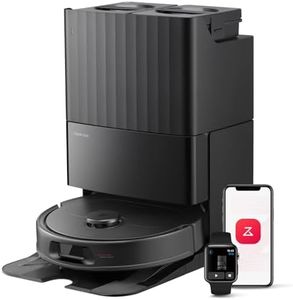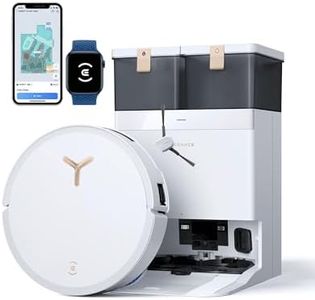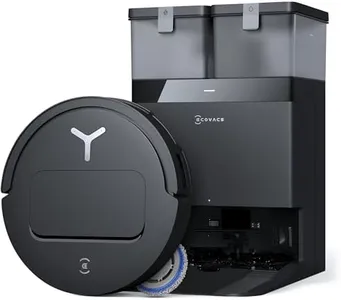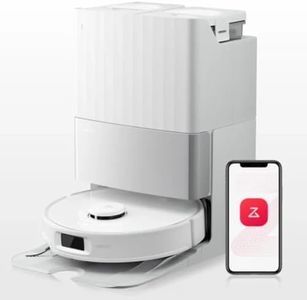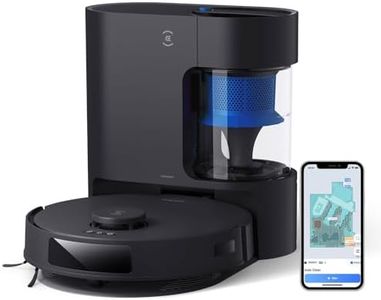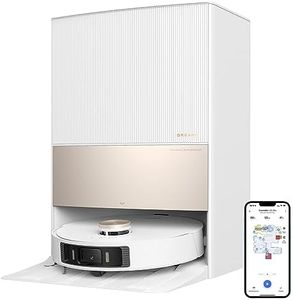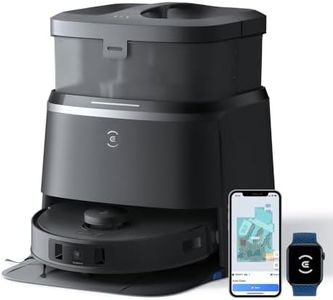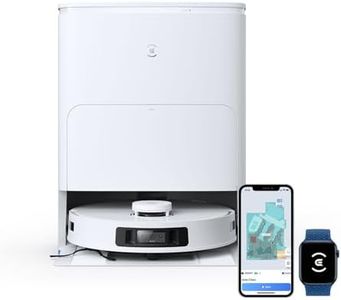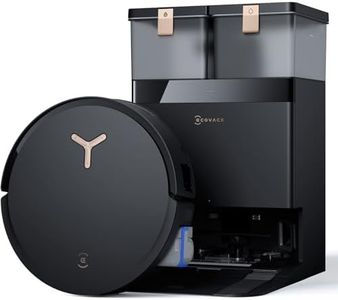We Use CookiesWe use cookies to enhance the security, performance,
functionality and for analytical and promotional activities. By continuing to browse this site you
are agreeing to our privacy policy
10 Best Vacuum Robots
From leading brands and best sellers available on the web.Buying Guide for the Best Vacuum Robots
Choosing the right vacuum robot can transform your cleaning routine by saving you time and effort. Consider how much area you need to cover, the types of floors in your home, and any special cleaning challenges (pets, allergies, kids) you might have. Vacuum robots come with a variety of features and options, and understanding what matters most for your living space will help you find the best fit. Think about your lifestyle and cleaning preferences: do you want to schedule cleanings when you’re away, or do you need a deeper clean for high-traffic areas? By focusing on the key specs below, you can better match a vacuum robot to your unique needs.Battery LifeBattery life refers to how long the vacuum robot can operate before needing to recharge. This spec is especially important if you have a large home or want the robot to clean multiple rooms in a single session. Short battery life (under 60 minutes) is suitable for small apartments or quick touch-ups, while medium (60–120 minutes) is ideal for most standard homes. Long battery life (over 120 minutes) is best for larger spaces or those who want more thorough coverage. Think about the size of your space and how often you expect the robot to clean when deciding what battery life is right for you.
Suction PowerSuction power determines how well the robot can pick up dust, debris, and pet hair. Measured typically in Pascals (Pa) or by manufacturer’s rating, higher suction is better for deep carpet cleaning and homes with pets, while lower suction is okay for hard floors or lighter cleaning tasks. For homes with primarily hard floors and light dirt, low to medium suction suffices. For carpets, high traffic, or pet owners, stronger suction is necessary. Assess your flooring and how much dirt is typically present to choose accordingly.
Navigation and Mapping TechnologyNavigation and mapping technology is about how the robot finds its way around your home. Basic models move randomly, which works in smaller areas and simple spaces. More advanced robots use sensors, cameras, or lasers to map your home and clean in efficient patterns. If you have a complex or larger floor plan, prefer robots with advanced navigation for better coverage and to avoid missed spots. If your living space is straightforward, simpler navigation will be sufficient.
Dustbin CapacityDustbin capacity is the size of the debris container inside the robot. A bigger dustbin means the robot can run more cycles without needing to be emptied, which is convenient for larger homes or if you have pets that shed a lot. Smaller bins might require more frequent emptying but are fine for frequent or smaller space cleaning. Consider how much dirt accumulates in your home and how often you want to empty the bin to pick the right dustbin size.
Smart Features and App IntegrationSmart features include things like scheduling, remote control via mobile app, voice assistant compatibility, and custom cleaning zones. Robots with app and Wi-Fi integration let you control them from anywhere and often offer more detailed cleaning customization. If you like managing devices from your phone or smart speaker and value convenience, these features are important. If you prefer press-and-go simplicity, basic programmable buttons may be enough.
Floor Type CompatibilityFloor type compatibility refers to how well the vacuum robot works on different surfaces like hardwood, tile, carpet, or rugs. Some models handle transitions between floor types smoothly, while others are better suited for either hard floors or carpets. If your home has a mix of surfaces, look for a robot designed for multi-surface cleaning. For homes with mainly one type, choose a robot specifically optimized for that flooring.
Noise LevelNoise level indicates how loud the vacuum robot is while operating, usually measured in decibels (dB). Quieter models are about as loud as a conversation, while louder ones can be disruptive, especially if you’re home during cleanings. If you plan to run the robot while you’re working, sleeping, or during quiet times, look for models advertised as low-noise. If it will be running when you’re away, noise may be less important.
Automatic Dirt DisposalAutomatic dirt disposal is a feature where the robot empties its dustbin into a larger container at its charging dock, reducing the number of times you need to interact with it. This is useful for busy people, large homes, or anyone who values maximum hands-off convenience. If emptying a dustbin frequently isn’t a concern, robots without this feature are just fine and cost less.
